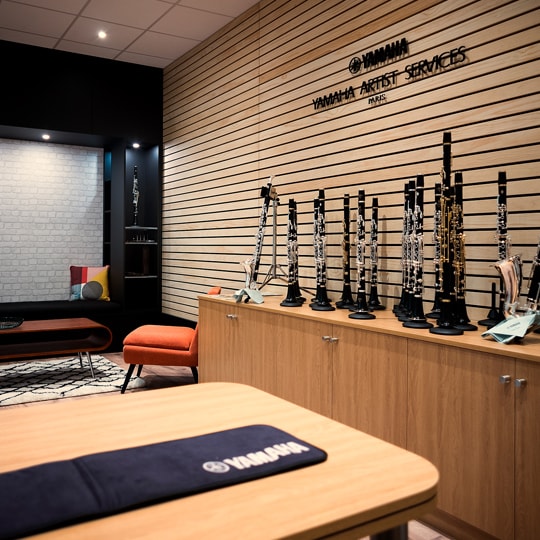TSR20
Anche pour saxophone ténor en si bémol, force 2, 1 pièce
- Il est facile d'en jouer, même pour ceux dont l'embouchure n'est pas entraînée ou dont le souffle manque de puissance
TSR25
Anche pour saxophone ténor, force 2 1/2, 1 pièce
- Résistance légère, possibilité d'en jouer avec une embouchure non développée
TSR30
Anche pour saxophone ténor, force 3, 1 pièce
- Sensation de souffle bien équilibré qui répond naturellement au flux d'air soufflé par le joueur
TSR35
Anche pour saxophone ténor, force 3 1/2, 1 pièce
- Résistance idéale permettant aux joueurs de souffler avec force
Des anches synthétiques au toucher naturel
Fabriquer des anches synthétiques qui ouvrent la voie à la maîtrise. C'est l'objectif que nous voulons atteindre avec nos anches synthétiques et que nous voulons proposer aux musiciens.
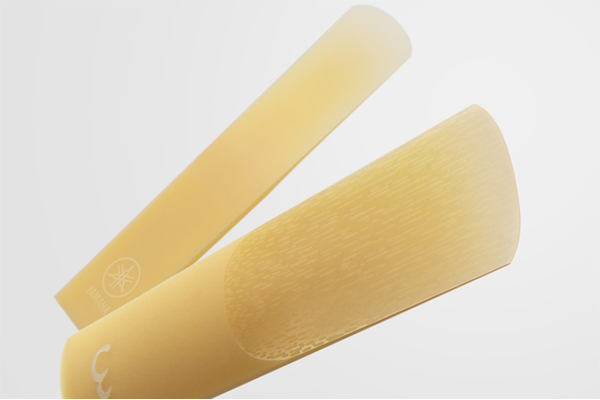

Profitez d’un son de qualité plus longtemps et de manière plus sûre
Les anches synthétiques Yamaha mettent l'accent sur la facilité de jeu et de l’émission. Les musiciens qui utilisent une anche synthétique pour la première fois bénéficieront d'une prise en bouche et d'une sensation de jeu naturelles, leur permettant de se concentrer davantage sur leur performance. La durabilité et l’hygiène sont également des caractéristiques essentielles pour que les musiciens puissent utiliser l'anche plus longtemps et en toute sécurité.


Trouvez l'anche la mieux adaptée à votre jeu et améliorez-vous
Le terme "synthétique" ne signifie pas que les anches sont entièrement uniformes. Il est important de choisir l'anche qui produit le meilleur son en fonction de la technique des musiciens et du choix du bec. Les anches synthétiques Yamaha peuvent être utilisées non seulement avec nos populaires becs de la série 4C, mais également avec d'autres becs.
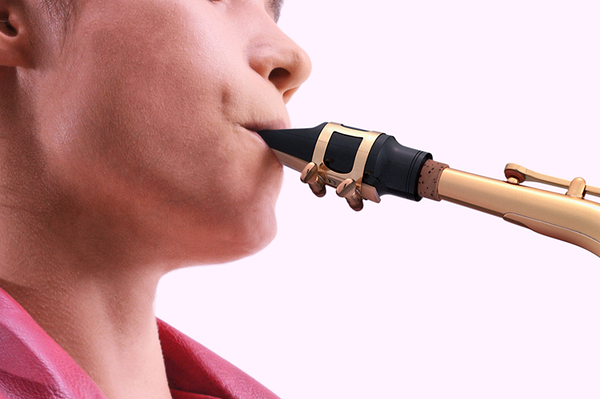

Fonctionnalités
Démo de son
Caractéristiques
Matériau et forme d'origine Yamaha
Outre la facilité de jeu et la production de sons, ces anches synthétiques offrent aux joueurs débutants une faible résistance avec un aspect et une texture similaires à ceux des anches naturelles.
1) Matériau : Une nouvelle formulation basée sur un matériau fibreux. Sonorité similaire à celle du roseau naturel.
2) Texture : Texture de roseau simulé pour une sensation naturelle. Aspect et toucher similaires à ceux du roseau naturel.
3) Forme : Forme originale avec nervure centrale. Jouabilité équilibrée sur toute la tessiture de l'instrument.
4) Traitement thermique : Les anches synthétiques sont entièrement traitées thermiquement. Sonorité profonde et production d'un son doux.
5) Numéro d'anche gravé : Le numéro de l'anche est gravé au laser sur la surface extérieure. Marquage durable et lisible. (Le logo Yamaha est gravé sur la surface intérieure).
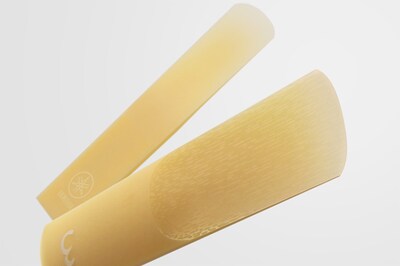
Haute durabilité
Les anches synthétiques Yamaha ont été testées pendant 320 heures, soit environ 8 mois d'utilisation réelle*. Aucune modification de la rigidité ou de la forme n'a été détectée, même après 320 heures.
La durabilité contribue à réduire le coût des anches, ce qui rend les anches synthétiques Yamaha plus abordables que les anches en roseau.
* 2 heures par jour, 20 jours par mois.
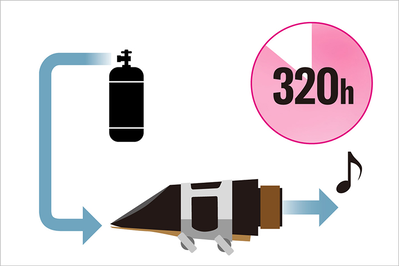
Une sécurité totale en bouche
Les anches synthétiques Yamaha ne contiennent aucune substance toxique* et peuvent être nettoyées et désinfectées efficacement à l'aide d'un nettoyant pour embout buccal ou d'un produit similaire afin de garantir qu'elles sont toujours sûres et hygiéniques.
* Testé selon les normes du ministère japonais de la santé, du travail et de la protection sociale, et entièrement conforme aux réglementations japonaises, européennes et américaines.

Prêt pour l'utilisation
Il n'est pas nécessaire d'assaisonner les anches. En outre, l'emballage en plastique et l'étui en papier dans lesquels les anches synthétiques Yamaha sont vendues peuvent être utilisés comme étui pratique pour les anches. L'étui en papier est résistant à l'eau et ne se ramollit pas ou ne se déchire pas s'il est utilisé pour conserver une anche humide.
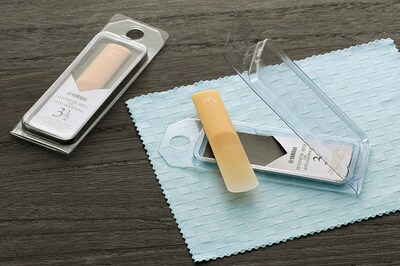
Historique du développement
* Les spécifications peuvent être modifiées sans préavis. Les couleurs et les finitions illustrées peuvent différer de celles des produits réels.










